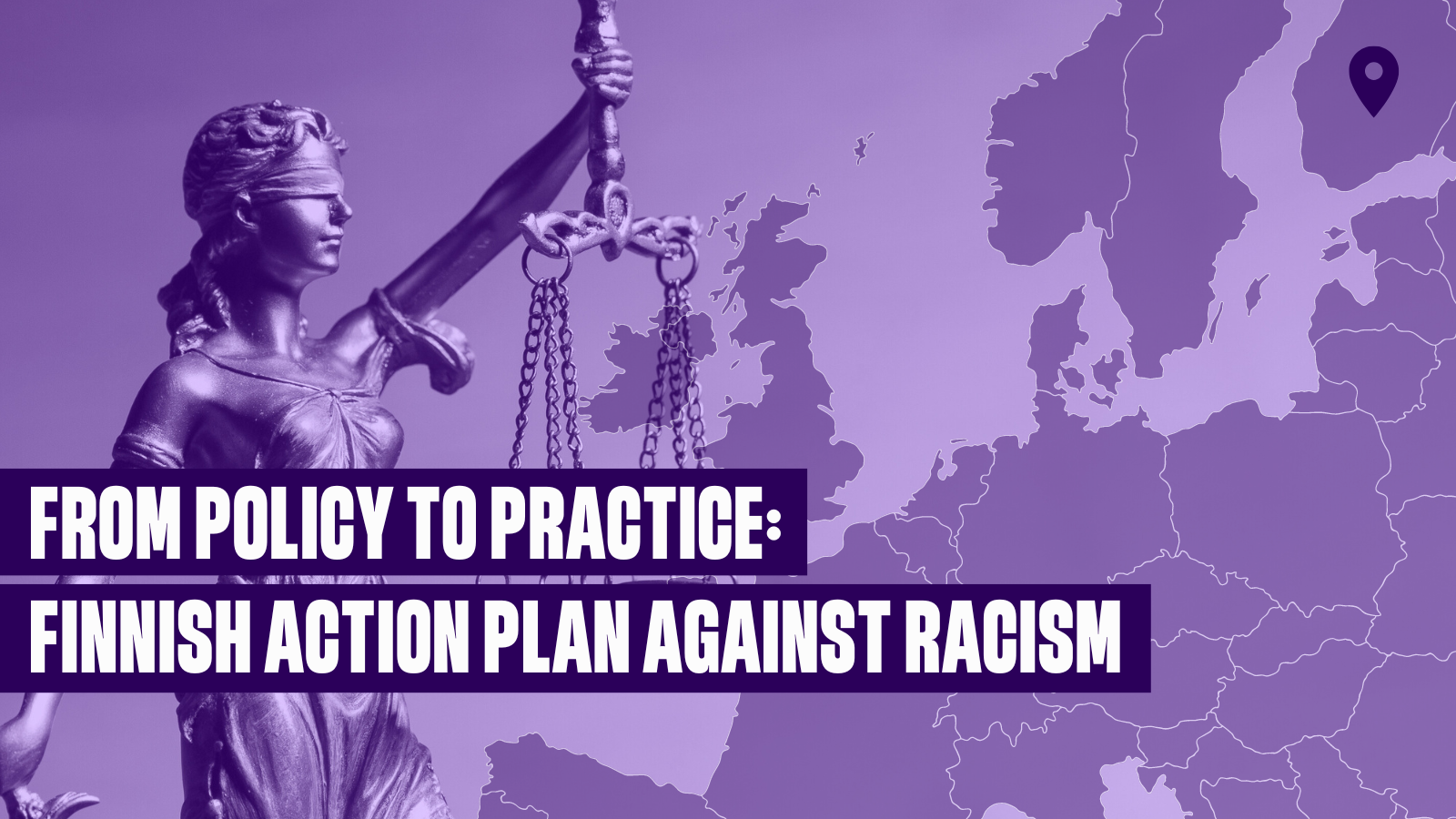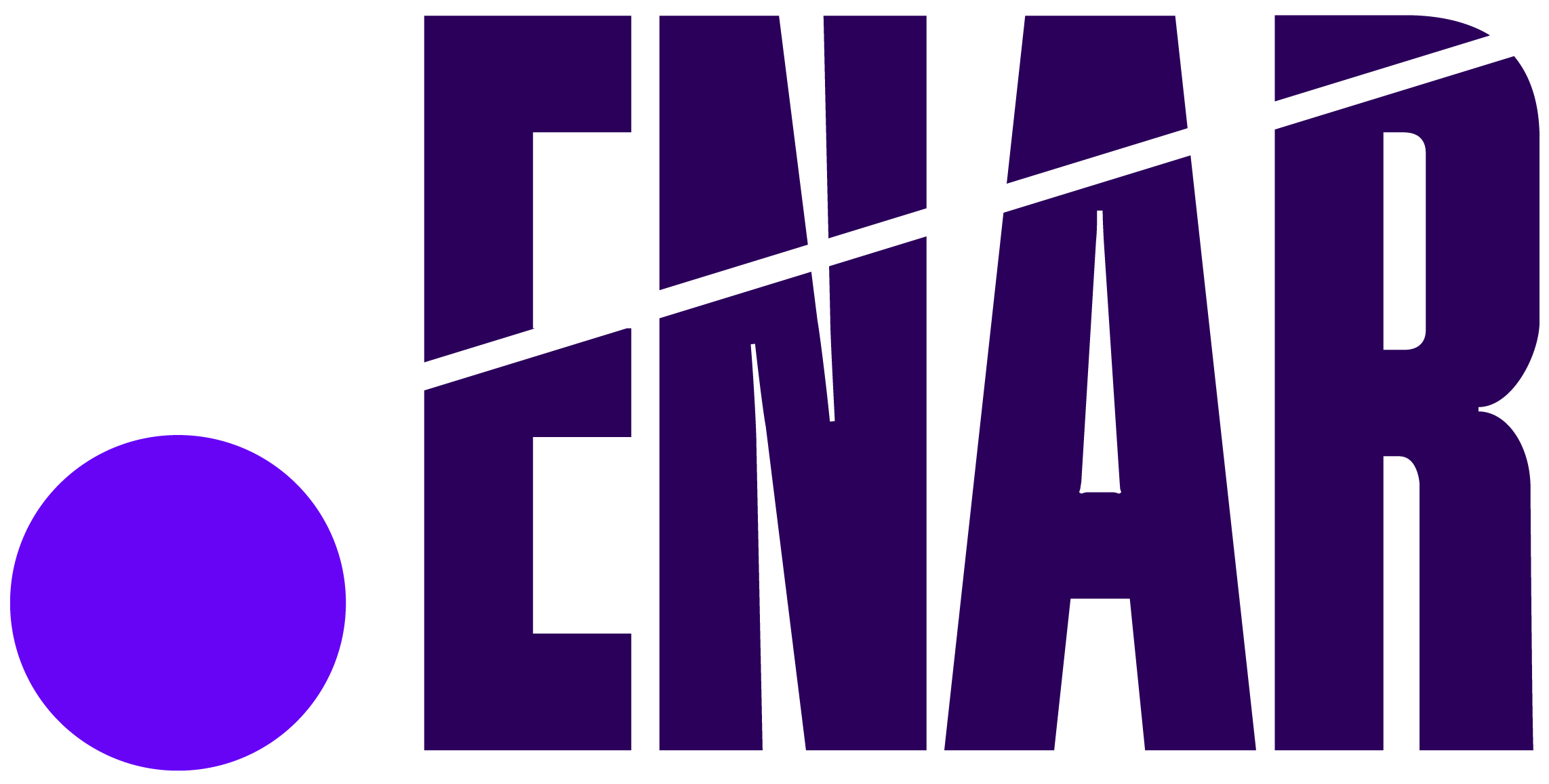
Anti-Racism Map: Mapping Anti-Racism Plans in Finland
In ENAR’s evaluation of the National Action Plans against Racism, Finland scored 15/20. While the country has made significant progress in implementing the plan, there remain critical areas in need of strengthening, namely the lack of disaggregated data collection, the lack of monitoring resources, and the absence of a civil society coalition advocating for NAPAR.
Overview
| Category | Score | |
|---|---|---|
| 1. NAPAR Adoption | ++ | 3/4 |
| 2. Intersectional Approach | ++ | 3/3 |
| 3. Equality Data Collection | ++ | 3/4 |
| 4. Institutional Participatory Mechanisms | ++ | 3/3 |
| 5. Resource Allocation | + | 2/3 |
| 6. Civil Society Coalition | – | 1/3 |
| Total Score | 15/20 |
Summary
On 28 October 2021, the Finnish government approved as a decision in principle an action plan against racism and to promote good relations, published as “An Equal Finland: Government Action Plan for Combating Racism and Promoting Good Relations between Population Groups” (In Finnish: Yhdenvertainen Suomi: Valtioneuvoston toimintaohjelma rasismin torjumiseksi ja hyvien väestösuhteiden edistämiseksi). The Action Plan was drawn up to meet the two objectives set in the Government Programme of Prime Minister Marin’s Government: 1) that racism and discrimination will be combated in all sectors of society, and 2) that the Government will draw up a broad-based action plan for promoting good relations between population groups during the government term to supplement the Government Integration Programme. The Action Plan is based on a situation assessment and contains eight key goals and 52 measures to be implemented in different administrative sectors in 2021-2023. Its measures are partly financed with existing appropriations and EU funding.
A broad-based preparatory working group was appointed to prepare the Actions Plan on 21 March 2020. The working group included representatives from all ministries and the Prime Minister’s Office, the Association of Finnish Local and Regional Authorities, the Sámi Parliament, the Advisory Board for Ethnic Relations, the Advisory Board on Romani Affairs, the Swedish Assembly of Finland, the Human Rights Centre and the Non-Discrimination Ombudsman. The working group will continue its operations until the end of 2023, guiding and directing the implementation and evaluation of the Action Plan. None of the Finnish NGOs working specifically on anti-racism are part of the working group, and there were no independent CSO coalitions that had advocated for NAPAR. By linking the action plan against racism with that for integration, it has also meant that overall, anti-racism is still broadly looked at from the framework of immigrant integration – inconsistent terminologies are used to refer to racialised people (e.g. ethnic minorities, immigrants, foreign-born, non-Finnish/Swedish speakers), and this perspective is reflected in the focus of the policy areas and measures.
The Action Plan aims to dismantle structural inequalities in society, promote non-discrimination in the Finnish working life, strengthen the authorities’ equality competence, raise awareness of racism and its various forms, and develop research and data collection related to racism. A definition of structural racism is included in the Action Plan, which was further expanded on in the report of the preliminary study on identifying and monitoring structural discrimination in different areas of society (measure #48 of the Action Plan). It also goes beyond interpersonal forms of racism in different policy areas including in AI, migration and law enforcement. While there is data on discrimination, current statistical data are not disaggregated by race and rely on proxies that may help approximate racial and ethnic identity groups but are not precise enough to establish a clear picture of the racial inequalities that exist in Finland.
A December 2023 Update
Finland held its parliamentary elections in April 2023, from which a center-right coalition government was formed after 7 weeks of negotiations led by The National Coalition Party, with the True Finns Party, Swedish People’s Party, and the Christian Democrats. As soon as it was formed, the government was faced with what has been termed “a summer of racism scandals”, stemming from the racist writings, espousing the Great Replacement Theory, and participation in neo-Nazi events by several of the ministers from the far-right True Finns Party, including the current Deputy Prime Minister Rikka Purra and Speaker of Parliament Jussi Halla-Aho.
The Deputy Prime Minister had written about wanting to shoot Black children and called Muslim women “black sacks” (i.e., not even human), the initial Minister of Economy from the same far-right party participated in neo-Nazi events and upon his resignation was replaced by another far-right Minister who had been investigated for sexual assault, uses racial slurs, and talks about not just banning the hijab, but Muslim women themselves from entering the country. It also worth mentioning that the Speaker of Parliament has been convicted by the Finnish Supreme Court twice for incitement to ethnic and racial hatred, and had been a former member of Suomen Sisu, a neo-Nazi and neo-fascist group, up until 2019.
This led to unprecedented multiple major demonstrations in Finland to, among other things, demand the resignation of the far-right deputy Prime Minister Riikka Purra. It also led to the government preparing an anti-racism statement where not a single explicitly anti-racist organisation was invited to the consultation. No Muslim organisation was also initially invited even though the “racism scandals” was mostly targeting Muslim communities, but after public outcry, 1 organisation was invited. The anti-racism statement itself has been deemed by researchers to be a compromise of the previous Action Plan by the government that will only strengthen structural racism.
The government continues to face confidence votes in parliament. The far-right party currently holds the Ministry of Justice and Ministry of Interior portfolios, where they have already moved to tighten immigration laws, residence and citizenship requirements by the end of the year. They are also proposing to increase the powers of the police to make random body checks (i.e., ethnic profiling), as well as changes to the law on incitement to ethnic and racial hatred to narrow the definition even more (i.e., make it more difficult to prosecute). This is despite the fact that the European Commission had already started infringement procedures against Finland two years ago for having too narrow of a provision in the Criminal Code.
Explanations and Sources
The assessment is based on independent research carried out for the European Network Against Racism by Amiirah Salleh-Hoddin in her previous capacity as a Chair of Anti-Racist Forum. Below are the additional explanations and resources that support these assessments.
1. NAPAR Adoption
There has been a clear policy document adopted and made public by the government. However, NAPAR is still not adopted by the Parliament.
- Action Plan (in English)
- Press release (in Finnish)
- News (in Finnish)
2. Intersectional Approach
A sophisticated definition of structural, historical and institutional racism, including the process of racialisation and intersecting oppressions. The policies tackle structural rather than merely individual forms of racism, focusing on key policy areas such as AI, migration and/or law enforcement.
The definition of structural racism: A form of racism where hidden or open racism is ingrained in social norms and practices or a society’s structures, such as its institutions, organisations, agencies, agreements, legislation, and services. The difference between structural racism and structural discrimination is in the modes of thinking behind the actions: the first considers certain groups of people inferior due to their ethnic origin, skin colour, nationality, culture, native language, or religion, for example. (Action Plan, p.69)
The concept was expanded on through measure #48 of Action Plan to create a monitoring model for structural racism, including a research review of racism in Finland’s history. The report was published at an event co-organised by the Finnish Institute of Health & Welfare (THL) & Ministry of Justice: Structural discrimination & racism – what do they mean and how to deal with them? (Panu Artemjeff & Liban Sheikh: What is structural racism and discrimination and how can it be measured? Results of the preliminary study on identifying and monitoring structural discrimination in different areas of society).
A definition of intersectionality was also included under the Concepts section (p.69 of Action Plan), but within the document was used interchangeably with “multiple discrimination, in which two or more personal characteristics together result in the person’s unequal treatment constituting prohibited discrimination (intersectional discrimination)” (p.15), rather than referring to the intersecting oppressions of economic exploitation and patriarchy.
Section 4.2 of the Action Plan (p.24-34) lists the different policy areas that go beyond interpersonal forms of racism, including in AI, migration and law enforcement.
3. Equality Data Collection
Equality data on discrimination and racial inequalities but not disaggregated by race and ethnicity.
Current statistical data rely on proxies rather than explicit racial and ethnic categories. While these ‘colour-blind’ categories may help approximate racial and ethnic identity groups, they are not precise enough to establish a clear picture of the racial inequalities that exist in Finland. This was highlighted in a commentary at an event co-organised by the Finnish Institute of Health & Welfare (THL) & Ministry of Justice as part of the Action Plan: Structural discrimination & racism – what do they mean and how to deal with them?
The assessment is also based on:
- Ministry of Justice’s data hub on equality & discrimination
- Doctoral research project, Amiirah Salleh-Hoddin, University of Helsinki: Racial Conceptualisations and Categorisations in Statistics: a Participatory Approach towards Developing Racial Equality Data in Finland
4. Institutional Participatory Mechanisms
There is a permanent participatory structure, with clear terms of reference and regular meetings. Civil society representatives, including from racialised groups, are involved in decision-making processes related to policy design, implementation, and monitoring.
The working group’s process in preparation of the implementation is outlined in Section II of NAPAR.
5. Resource Allocation
A small budget with a small team (less than 4 persons) to implement the NAPAR, with no relevant resources for monitoring.
Section 6.1 of the Action Plan indicates the responsible parties, cooperation parties, and funding sources for the different measures; but they are not detailed. At the time of research, only three staff members from the Ministry of Justice are listed as part of the team working on the Action Plan.
6. Civil Society Coalition Advocating for NAPAR
There is no coalition of civil society organisations (CSOs) advocating for NAPAR implementation, only individual organisations’ advocacy work.
The research was carried out by Amiirah Salleh-Hoddin from the Anti-Racist Forum in March 2023.



